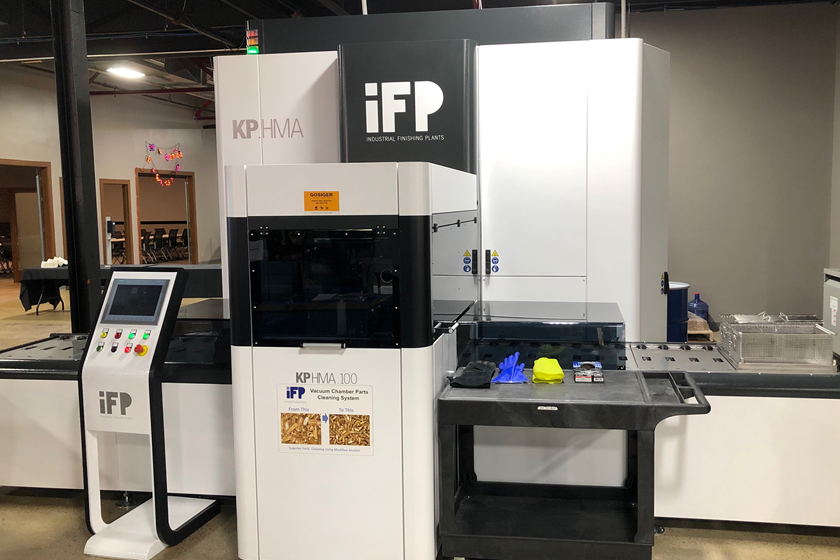Published
The Aerospace Finishing World According To J.C. Hall
Seattle finisher educates aerospace execs on issues they face, whether they like to hear it or not.
#pollutioncontrol #aerospace #masking
Contributor
J.C. Hall has been in the aerospace industry for more than 40 years, yet he still considers himself a newbie when it comes to finishing.
But that didn’t stop the vice president of Hytek Finishes in Seattle, Wash., from speaking the truth about finishing and the industry when he recently addressed the Pacific Northwest Aerospace Alliance, which works to promote the aerospace industry in the Northwest U.S.
Hall told airline industry executives at one of PNAA’s monthly breakfast meetings that they needed to rethink their perspective of the finishing industry being the last—and often most hurried—stop on a part’s trip through production, to one where there is greater concern (and time) given to getting the job done right.
“We’re seeing production ramp up as much as 55 percent over the next few years, but the aerospace industry needs to take a hard look at the capacity of the finishers who are so integral to their business,” Hall says.
The major themes Hall tried to convey to the executives were that metal finishing capacity is limited in the U.S., that platers are facing an incredible number of regulatory issues that threaten their industry, that replacement regulations similar to Europe’s REACH initiative are another adversary, and that the transition to composites is another challenge.
In other words: Help us help you by working more closely on lead times, proper specifications and development of new processes.
“Panic-stricken” is how Hall described Airbus procurement guru Davis Williams’ response to the intelligence Hall gave him on the state of the aerospace industry as it relates to metal finishing. Airbus’ goal of sourcing more than $10 billion in production in the U.S. from its European operations over the next five years is one of the concerns Hall touched on with the executives. Assuming 60 percent of the Airbus work is structural metallics and conservatively estimating that about 10 percent needs finishing, Hall figures Airbus will need 30 major finishing shops around the country to handle the work—shops that are already thin on capacity.
“This will have a major impact on what we are all doing and how quickly we can get it done,” he says.
According to Hall, U.S. production of new aircraft in 2010 was 85, a number is expected to shoot up to 132 in 2015. Airbus is building its new A320 and A330/340 aircraft, and Boeing will make about 42 of its 737s. Projecting ahead from 2017 through 2020 and expecting airlines to replace more of their aging fleets, Hall guesses about 176 aircraft will be built, or about 105 percent more than the 2010 numbers.
So what did Hall suggest the aerospace industry could do to help itself during this ramp up?
“I told them that they could start by understanding our viewpoint of things and realizing that ‘one-piece flow’ is not a friend to finishers,” says Hall, referring to the concept of parts arriving at a manufacturer almost exactly when they are needed. Hall points to a career-worth of seeing bad purchase orders, insufficient information and unreasonable expectations from the aerospace industry.
“Just getting the specs right is a first step,” he says. “We see a lot of parts sitting on the ‘hold’ shelf because of incomplete information being sent to us. And nearly all of it is marked ‘expedited’ when it comes in the door. We can’t operate that way.”
Correcting flow-down issues such as acceptable Nadcap specifications, information on material type and heat treatment, and a general understanding of what finishers must do to coat parts properly would help, Hall says.
“There were some people that thanked me for pointing these things out,” says Hall, who admits that a booming industry helps everyone, but tells everyone he meets that a great relationship between a manufacturer and a finisher is just like a husband and wife.
“It’s a marriage that is dependent on communication, patience and fidelity,” he says with a chuckle.
RELATED CONTENT
-
Are TGIC-Free Powder Coatings Right For You?
This alternative to TGIC-based polyester powder coatings offers similar performance and enhanced transfer efficiencies.
-
Troubleshooting for Electrocoating
Characterizing the type of defect is essential in identifying the root cause and eliminating its source...
-
Dis-Charge Your Powder
A practical approach to managing electrostatic problems and hazards during powder coating















